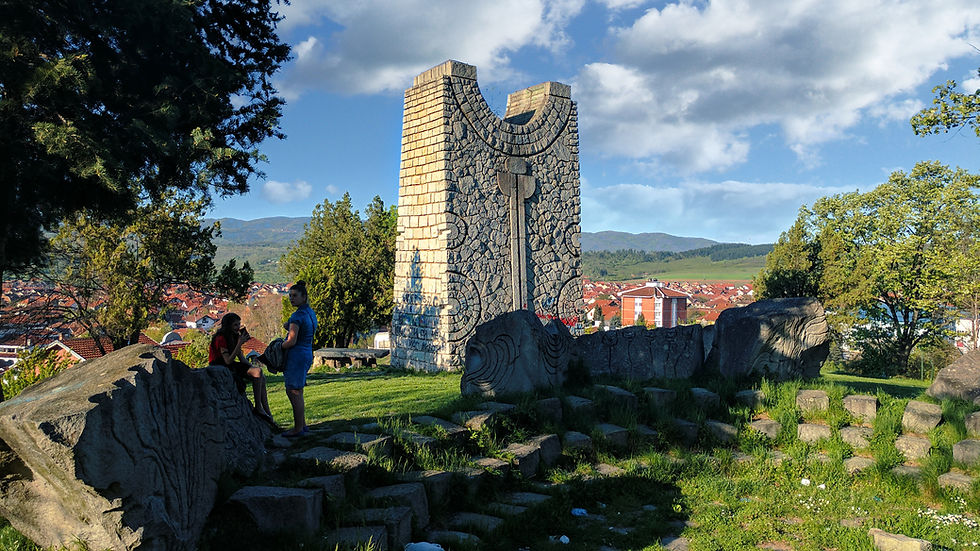
A view of the central monument at the WWII spomenik complex and memorial graveyard in Vlasotince, Serbia.
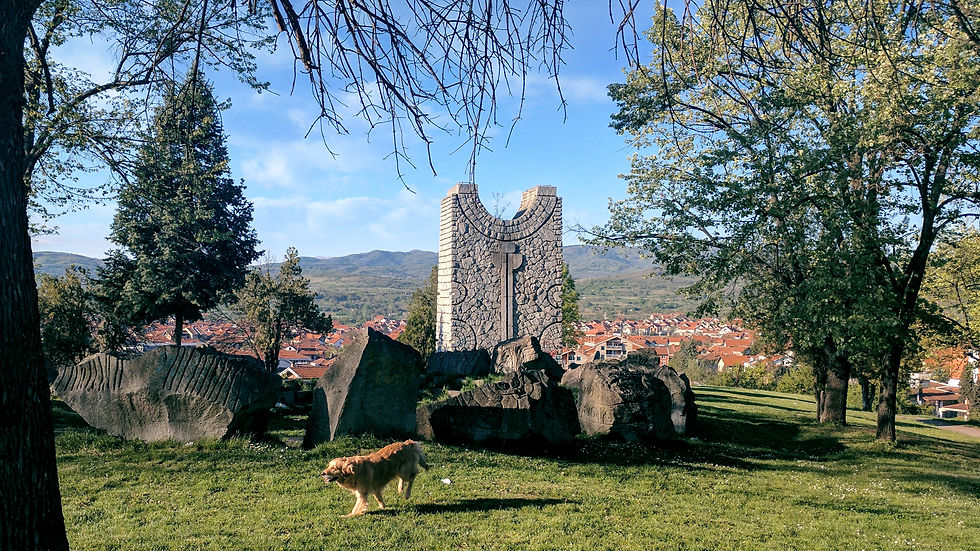
A view of the central monument at the WWII spomenik complex and memorial graveyard in Vlasotince, Serbia.
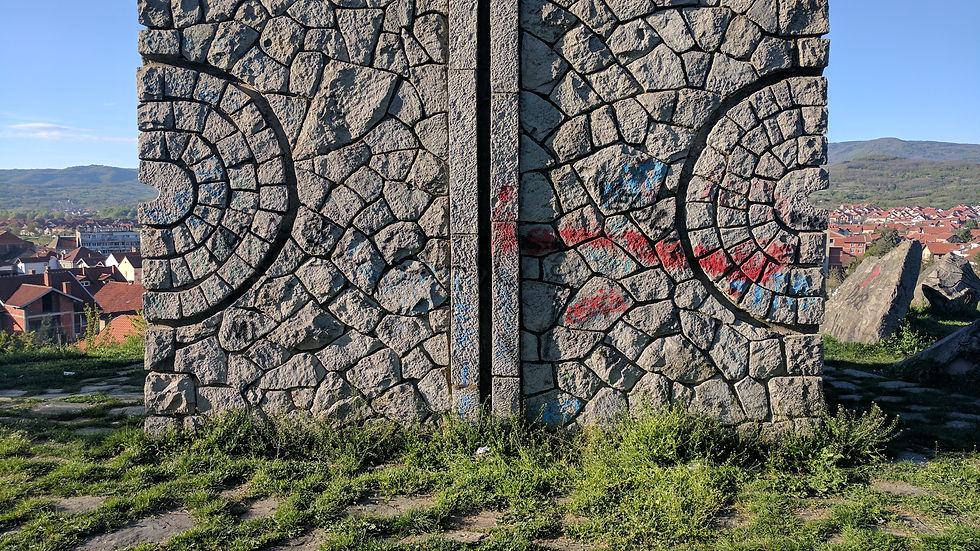
A close-up view of the central monument at the WWII spomenik complex and memorial graveyard in Vlasotince, Serbia.

A view of the central monument at the WWII spomenik complex and memorial graveyard in Vlasotince, Serbia.
Vlasotince (Власотинце)
Brief Details:
Name: 'Monument to the Start of the Revolutionary Struggle' or 'Old Cemetery' (Staro Groblje/Старо Гробље)
Location: Vlasotince, Serbia
Year completed: 1975
Designer: Bogdan Bogdanović (profile page)
Coordinates: N42°57'46.1", E22°07'58.0" (click for map)
Dimensions: 12m tall monolith on 1ha site
Materials used: Stone blocks
Condition: Fair, neglected
(VLAH-soh-tin-tseh)
History:
This monument at the spomenik complex in Vlasotince, Serbia is dedicated to the military and civilian victims from this area who perished during the National Liberation struggle against Axis forces.
World War II
As the Kingdom of Yugoslavia was dismantled and occupied with the Axis invasion in April of 1941, the Germans reorganized the region of present-day Serbia into an area called the "Territory of the Military Commander in Serbia", which was then occupied by the German Army and under the supreme control of its appointed military commander, Serbian Nazi-collaborator Milan Nedić. German occupation forces reached Vlasotince by April 10th, 1941, approaching from Bulgaria and were accompanied by Bulgarian Axis collaborators. However, by July of 1941, popular uprisings against Axis occupation and oppression began to swell up in not only in the town of Vlasotince, but across Serbia. One of the first armed resistance actions in Vlasotince occurred on July 26th, 1941 when a group of rebels led by local communist leader Siniša Janić (Photo 1) cut communication lines along the Belgrade-Skopje railway line by the Djordjev rail station, which resulted in a shoot-out with Bulgarian occupation enforcers.
After this attack, hundreds of citizens became inspired to join the region's two primary armed resistance groups, Josip Tito's communist 'Partisan' army and the royalist 'Chetnik' fighters, led by Draža Mihailović. While these two groups initially collaborated in fighting against the Germans, Nedić and other Axis forces around Vlasotince, by the end of 1941, disagreements and in-fighting led the Chentiks switching sides and initiating battles against the Partisans on behalf of the Germans. In retaliation for this betrayal, on June 23rd, 1942 Partisans in Vlasotince attempted to assassinate local Chetnik leader Jovan Ivković, however, this attempt was unsuccessful. The Partisans responsible were soon caught and sent to the Red Cross concentration camp at Niš. By 1943, the German Army realized that preventative measures dissuading Serbians from joining the Partisan resistance were ineffectual. As a result, more punitive actions were carried out. During the spring/summer of 1943, German and Chetnik troops began to round up and execute any suspected Partisans, and even suspected Partisan collaborators, in the surrounding villages of Vlasotince, such as Orašje, Garama Gložane and Grdelica, after which point hundreds of homes were burned to the ground. Meanwhile, on May 19th, 1944, a Bulgarian battalion entered the village of Crvena Jabuka, just east of Vlasotince, and executed 52 people and burned down over 50 homes, with sources reporting that 14 children were among those killed. The Bulgarian unit at Crvena Jabuka was eventually repelled from the village by the 7th Serbian Partisan Brigade.
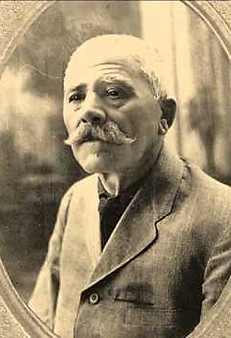
Photo 1: Siniša Janić, 1950

Photo 2: Members of the German 7th SS Division arresting civilians in Vlasotince, 1944
Through 1943 and 1944, Partisan units fought heavily around Vlasotince in attempts to free the town from Axis control, but with little success. However, on September 30th, 1944, units from the 22nd Serbian Partisan Brigade managed to free the town from German, Chetnik and Bulgarian Axis occupation forces. Yet, just a few days later on October 6th, the German 7th SS Division (Photo 2) retook Vlasotince from the Partisans after a three-day battle. The final liberation of Vlasotince from Axis control was finally achieved by the Partisans on October 10th by members of the 1st Vlasotince Partisan Brigade. From here, the German SS troops headed towards Leskovac, with the Partisans in close pursuit. The Valsotince region was devastated by the war, with hundreds of civilians and soldiers from the town dying, while over 3,000 buildings in the town and surrounded area were either destroyed or burned to the ground.
Spomenik Construction
In early 1975, the local municipality of Vlasotince, in cooperation with the SUBNOR veterans group, organized plans for the creation of a spomenik complex in Vlasotince to commemorate the town's fallen soldiers and civilians who perished during WWII. Famed Belgrade architect Bogdan Bogdanović was commissioned to coordinate the location and design for this memorial (Photos 3a+b). The site chosen for Bogdanović to create this grand memorial complex was an old cemetery overlooking the Vlasina River at which already existed a small modest WWII memorial plaque from 1952. The completed memorial was officially unveiled to the public during a commemorative ceremony on October 8th, 1975, a date chosen to celebrate the 31st anniversary of the start of the battle for the liberation of Vlasotince.

Photo 3a: Sketch by Bogdanović of Vlasotince complex [source]

Photo 3b: Sketch by Bogdanović of Vlasotince complex
This unveiling commemoration event was presided over by the then president of SUBNOR Serbia, JNA Lieutenant General Momcilo Dugalić (Момчило Дугалић), who was also a notable Yugoslav National Hero. The central element of the memorial is a 12m tall stone-block monolith called 'The Guardian of the Revolution', while scattered around it are large rough boulders engraved with poetic inscriptions and designs. In front of the 'The Guardian' monolith, there is also a small sunken amphitheatre made of roughly hewn blocks of stone.The stone used in this memorial is called Momin stone, of a variety generally used for gravel, which originated from a now-disused nearby quarry approximately 21km to the south of Vlasotince at the town of Grdelica. Stonework and masonry construction work at this site was organized and coordinated by Bogdanović and carried out by not only local stonemasons, but also the famed stonemasons from the regions of Pirot and Temska.
Present-Day
While the memorial site, which is commonly known as 'Old Cemetery' (Старо Гробље), bears some moderate signs of graffiti and vandalism, for the most part, the complex continues to be well maintained by the local municipality, as well as regularly maintaining its landscaping and grounds. This spomenik park was not subject to the sorts of neglect and destruction that many others across the former-Yugoslavia faced as that nation was dismantled. The site is regularly visited and honored by locals, as signs of wreath laying and other such tributes are quite common to see here. In addition, several commemorative and remembrance events are held at this site annually. All of these things speak to the level to which it is still cherished by the local community. For a closer and more interactive examination of the Vlasotince monument, designer Aleksandar Nikšić has created a fully immersive 3-D rendering of the spomenik site that can be explored at THIS link (Photo 3c).

Photo 3c: A view of the 3D model of Vlasotince by Aleksandar Nikšić.
Plaques, Engravings and Graffiti:
There are a number of significant engraved elements and plaques here at the Vlasotince memorial site. The most prominent element series is a set of four large rough boulders which are engraved with a series of inscriptions (Slides 1 - 4) which relate a poetic stanza written by famed Serbian poet Vasko Popa (Васко Попа). It roughly reads, when translated from Serbian to English, as:
"Oh vine, carry forward your song through our veins, if you long for our honors, caress this stone at the noon-day hour. Oh trowel, begin your dance, there where our beating hearts failed, our star has outlived us and it will burn all who wish to burn it."
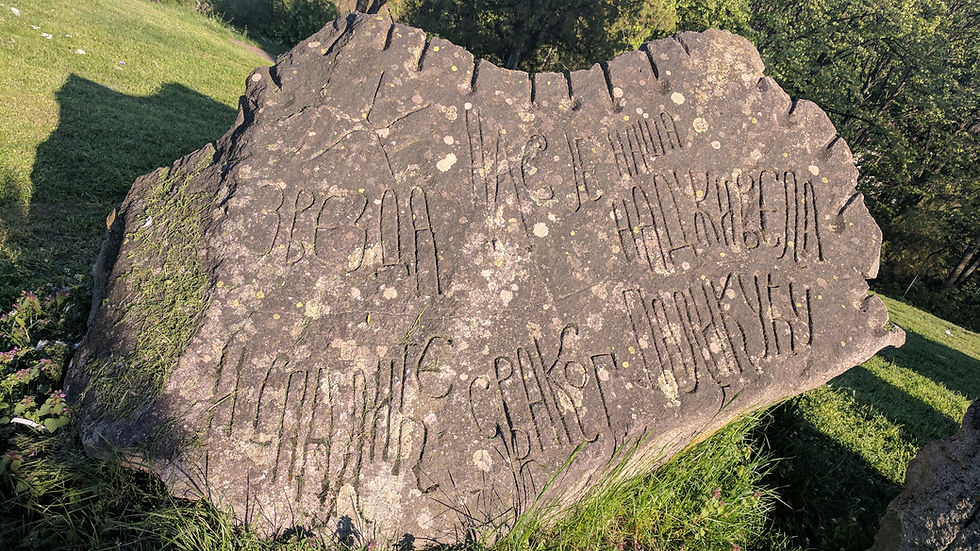
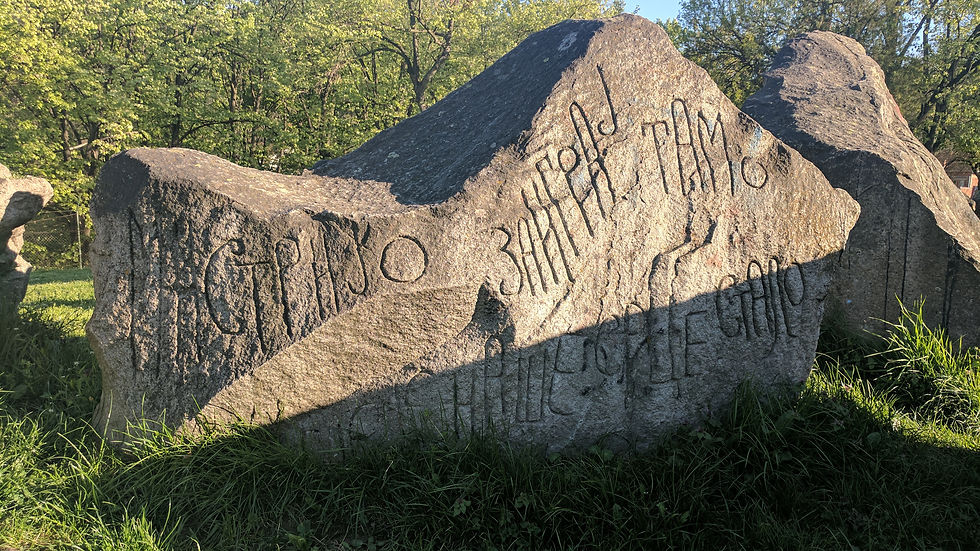
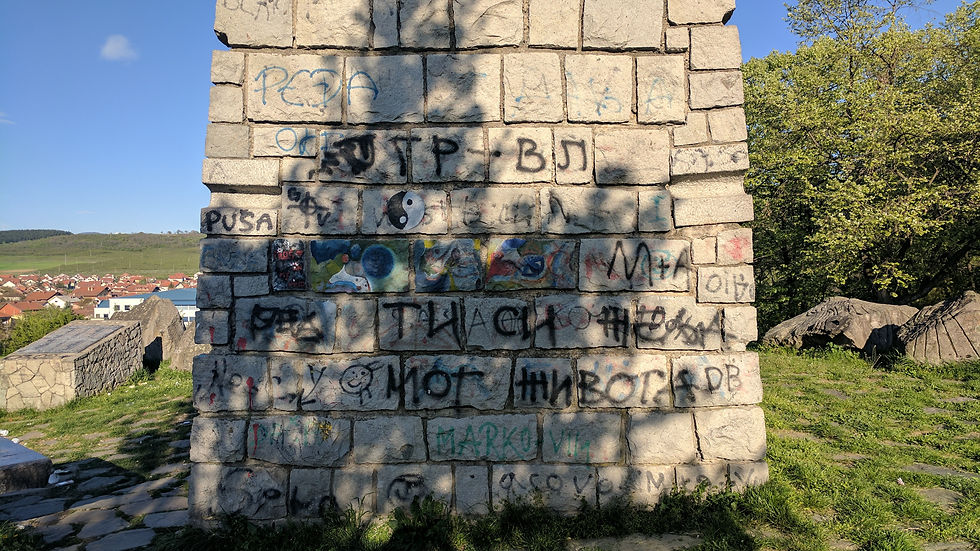

Slideshow
Initially reading this poem, which Popa wrote explicitly for the use in this memorial, its meaning is a bit mysterious, but I will explain here some theories about its intended meaning. Firstly, it is important to recognize that the poem is being told from the perspective of the fallen soldiers buried here. So, where Popa writes about the 'vine', he is making a reference to wine in an Orthodox Christian sense (wine being the blood of Christ) -- thus, in the poem, wine carrying 'the song' through these soldier's veins like blood may represent these soldiers being made holy through their fatal struggle for their homeland. Then, where the soldiers ask the personified trowel to begin its 'dance' at the location of their 'failed hearts', Popa may be saying that the soldiers are petitioning for the tools of labor (the trowel, in this case), to construct for them a memorial to their fatal struggle on the spot where they died. Finally, the 'star' is referring to the red star of Yugoslavia -- so, the soldiers are saying that, though they have died, the star of their homeland lives on and all those who try to destroy it will, in turn, themselves be destroyed. Help with this translation and poetic interpretation was provided to me by Reddit user 'Pyranth'.
Meanwhile, directly next to the central stone 'Guardian' monument, there is a large polished granite slab laying flat, propped up with several conical stones in a table-like fashion (Slides 5 & 6). It bears a lengthy engraved inscription, which reads, when translated from Serbian to English, as:
In remembrance of fallen soldiers of the Revolution, 1941-1945
Events, places and names to be remembered:
Oct 1st, 1941 to Oct 10th, 1944: KPJ (Communist Party of Yugoslavia), SKOJ (Union of Communist Youth of Yugoslavia)
1941: Vlasotnice, Orašje, Kozilo, Šišava
1941-1942: Vlasotince Partisan troop and Babica Partisan unit
1942: NOO (People's Liberation Committees)
1944: 12th Serbian shock brigade and 1st Vlasotince Partisan brigade of the NOVJ (Yugoslav People's Liberation Army)
Names to be remembered:
Miloš, Siniša, Jova, Mija, Stole... and 304 fallen comrades, 282 victims of fascist terror
Crimes of the occupier to be remembered:
Orašje, Donje Gare, Zlatićevo, Jakovljevo...
To be remembered and freedom to be protected
-October 8th, 1975-
Also next to the central stone 'Guardian' monument is a large slate stone plaque installed on top of a cobblestone platform (Slide 7). This plaque pre-dates Bogdanović's memorial, as it was the original WWII memorial built at this location back in 1952.
Memorial Plaque
Fallen Soldiers from the National Liberation War (1941-1945)
And Victims of Fascist Terror from Vlasotince
Martyrs:
(list of names)
Deaths from fascist terror:
(list of names)
Vlasotince Union Workers, Dec. 22nd 1952
Then, in Slides 8 - 15, you can see the numerous examples of large rough boulders randomly spread around this memorial which are engraved with organic patterns and neolithic-style floral designs. It is not immediately clear what, if any, overt representational meaning or symbolic purpose these engravings have, or if they are simply decorative elements intended to enhance the site.
Finally, in Slide 16 you can see that the lower 2-3m of the main 'Guardian' monument has been vandalized by graffiti and spray paint. While the rest of the site is in relatively good condition, the presence of this degradation seems to have been rather consistent over the years since the fall of Yugoslavia. If the municipality is making efforts to clean or remove this graffiti, it is not immediately apparent.
Symbolism:
As is the case with most of the sculptural and memorial work by Bogdanović, the symbolic and hidden representational meaning within the work is not always clear or apparent, while Bogdanović himself always made a point to never openly reveal the symbolic intentions behind his memorial creations. Yet, being that Bogdanović named this sculpture 'The Guardian' here at the Vlasotince spomenik park, some theorize it is meant to depict a stylized version of an atlas or telamon, which are the architectural representations of the Greek god Atlas (Photo 4), the divine being who was made to hold (or protect) the weight of the sky (or the earth) on his shoulders for all eternity. In this interpretation, the semi-circle section at the top of the monolith would stand as a representation the earth, while the long slender shape below the curve would represent a stylized human form (the Atlas) holding up the weight of that earth. Being that the Vasko Popa inscription at this site symbolically refers to Yugoslavia as 'our star', perhaps this celestial body being held up by the Atlas figure is a metaphorical 'star' representing Yugoslavia itself, while Atlas himself would represent the Partisan soldier supporting the weight of Yugoslavia on his shoulders though his struggle against fascist occupation. As a result, the official name which Bogdanović gave this monument, 'The Guardian', is put in clearer context when looking at it through the lens of the 'Atlas' symbolic theory.

Photo 4: Depiction of Atlas

Photo 5: Neolithic-era flower carvings on a stone at Newgrange, Ireland
Another interesting aspect to look at with this sculpture and the complex as a whole is the way overt attempts were made by Bogdanović to give the site a very ancient and neolithic feeling to it. Not only does the stone-built Guardian sculpture exude a very weathered and primitive atmosphere, with the sunken rough stone amphitheatre and the old toppled gravestones adding to this effect as well. However, the most compelling element of the site which adds to its prehistoric mystique are the series of large boulders scattered around the amphitheatre engraved with what appear to be neolithic flower carvings, almost as if the amphitheatre was the scene for some archaic rite conducted by a long dead people. Specifically, these carvings appear highly reminiscent of stone-art found at the entrance to the Newgrange neolithic burial mound complex in Ireland. We can assume that Bogdanović was very much inspired by Newgrange not only because it was being excavated and reported about during the time he built this monument, but he also writes about the symbolism of the burial mound extensively in his 1966 book "Urbanističke mitologeme" (which is available for download in the Spomenik Database Digital Library). Bogdanović's carvings here are what some sources would call 'fictitious archeology', asserting that such a symbolic language works to create a shared 'meta-history' which speaks to observers on multiple levels from a wide range of backgrounds and cultures.
These unique stone-carved designs were created through a effective collaboration between Bogdanović and his stone-masons. The process would begin with Bogdanović painting his designs onto the roughly hewn stone with a brush using a solution of watered-down ink. After Bogdanović had applied the designs to his satisfaction, the stone-masons would come behind him and carve out along the ink-painted sketches, needing only to know the desired carving depth. Bogdanović remarked that these drawings of his, above all others, would endure through time the longest.
Status and Condition:
Overall, the present state of the majority of this spomenik park is reasonably good. The landscaping and vegetation are regularly maintained and manicured by the local municipality, while the structure and condition of the memorial elements themselves are fair to good, with little cracking, degradation or decay visible. However, graffiti and other forms of vandalism are still a frequent occurrence here, as a significant amount of the 'Guardian' memorial sculpture is covered and defaced with spray paint. I found no directional or promotional signs leading to this complex from the main road, while there also existed no interpretive/informative signs at the park itself (other than the engraved plaques) explaining to visitors the historical significance of the site. However, in 2020, the nearby regional authorities in Leskovac put forward funds to improve this memorial complex, which resulted in site lighting, trails and some signage.

Photo 6: A modest 2016 commemorative event held at the Old Cemetery site
This memorial park is common location to find locals going on strolls, walking dogs and picnicking. Upon my most recent visit to this site, I personally witnessed a number of people relaxing and recreating here. However, on a larger scale, the site seems minimally promoted or advertised in any form to those outside the immediate community. Yet, many local clubs and organizations generally meet here for events and, interestingly, even a songbird singing competition was held in the amphitheatre of the spomenik park in April of 2017. Furthermore, several modest commemorative events are held at this memorial site annually, which can be evidenced by the honorific wreathes, candles and flower which can often be found here left by those in the local community. Among others, notable events which are held here on Vlasotince Liberation Day of October 10th and Victory Day on May 9th (Photo 6).
Old Graveyard:
Scattered seemingly at random around the memorial site here at Vlasotince, there are about a dozen or so historic gravestones. Most of these are in poor shape, broken, weathered and falling, results of both the natural passage of time, but also obvious neglect in some cases. As indicated by the shapes, styles and engravings on them, they mostly range in the time period from the early 1800s to the early part of the 20th century. While these do not immediately appear to be as culturally significant as the Balkan's famous stećci graves of medieval times, the graves here at Vlasotince are still extremely interesting and fascinating to study, examine and explore. Unfortunately, I was unable to find much of any information available about the historic nature of this gravesite. Please feel free to contact me if you have info about the history of this site!
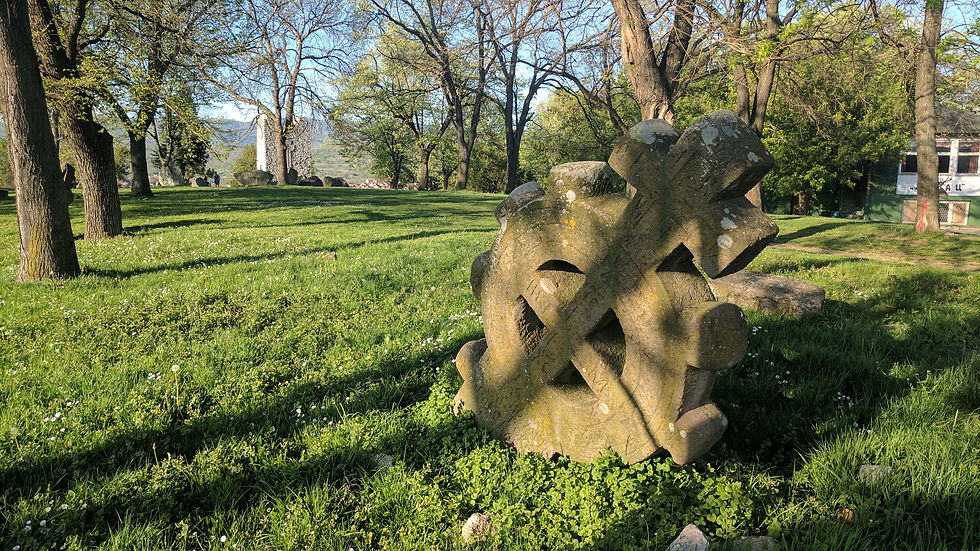
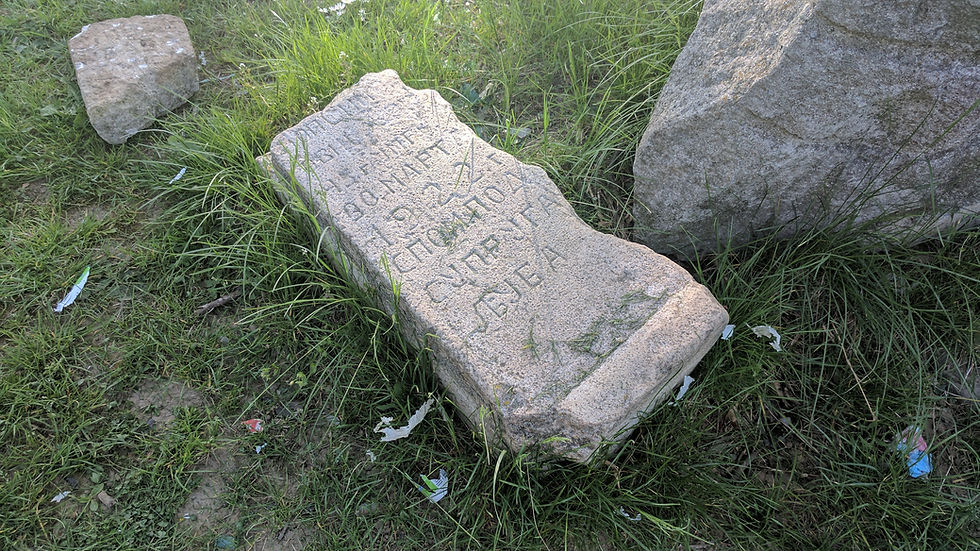
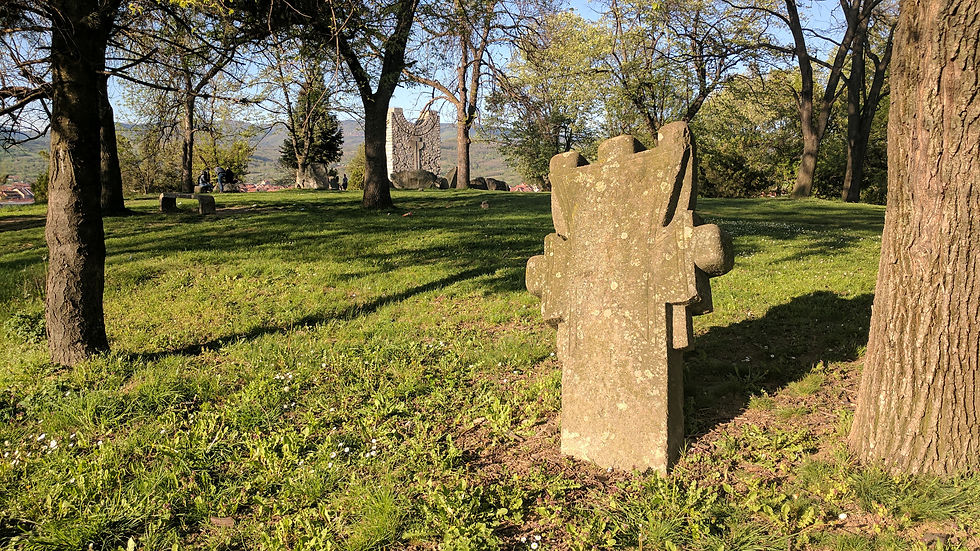

Old Graveyard - Slideshow
Directions:
Getting to the monument complex in the Old Cemetery at Vlasotince is a relatively easy endeavor. Firstly, from the Vlasina riverfront at the city center of Vlasotince, follow Njegoševa Street southeast along the river. After several hundred meters, take a left onto Stranje Rd. (see HERE for Google StreetView). After making the turn onto Stranje, drive about 50m and then pull off onto the worn out dirt area on the left side of the road (see HERE for Google StreetView). From here you can park an easily walk to the spomenik complex. The exact coordinates for parking are N42°57'43.8", E22°07'57.8".
Click to open in Google Maps in new window
Historical Images:

A historic view from the 1970s era of the monument at the spomenik complex at Vlasotince, Serbia.

A historic view from the 1970s era of the monument at the spomenik complex at Vlasotince, Serbia. (photo from: "Bogdanovic by Bogdanovic: Yugoslav Memorials through the Eyes of their Architect", Vladimir Kulic & Martino Stierli, MoMA publication.)

Conceptual drawings of the Vlasotince WWII spomenik complex at the Staro Groblje memorial created by Bogdon Bogdonavic.

A historic view from the 1970s era of the monument at the spomenik complex at Vlasotince, Serbia.
Slideshow
Selected Sources and More Information:
-Serbian Wiki article: "Spomenik revolucije u Vlasotincu"
-Serbian Wiki article: "Власотинце у Народноослободилачкој борби"
-Serbian Wiki article: "Партизански покрет у Власотиначком крају"
-Vlasotince.info article: "U Vlasotincu obeležen Dan pobede nad fašizmom"
-Znaci Archive article: "Vlasotince u oslobodilačkom ratu"
-Vladimir Vukovic paper: "Architektura sećanja - Memorijali Bogdana Bogdanovića"
-Туристичка организација општине Власотинце article: "Историја"
-Arhiva Modernizma entry: "Spomenik palim borcima Revolucije u Vlasotincu"
-Južne vesti article: "Vlasotinački Spomen-park - simbol slobode i mladih"
Comments:
Please feel free to leave a message if you have any comments, if you have any questions, if you have corrections or if you have any additional information or insight you feel might be appropriate or pertinent to this spomenik's profile page.
